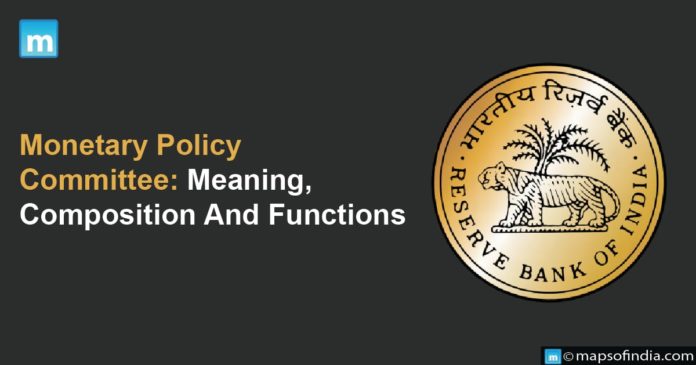The Monetary Policy Committee (MPC) is a statutory committee constituted by the Reserve Bank of India (RBI) under the Reserve Bank of India Act, 1934. The MPC’s fundamental goal is to uphold price stability while maintaining the goal of growth.
Composition of the MPC
The MPC consists of six members, three nominated by the Government of India and three appointed by the RBI. The members of the committee are as follows:
- Governor of RBI (Chairperson)
- Deputy Governor of RBI (Incharge)
- One officer of RBI nominated by the Governor
- Three members nominated by the Government of India are economics, banking, or finance experts.
Functions of MPC
-
Setting Interest Rates
The primary function of the MPC is to set interest rates in India. The committee meets at least four times a year to review the state of the economy and decide whether to increase, decrease or maintain the policy interest rate. The policy interest rate, or the repo rate, is the rate at which the RBI lends money to commercial banks. By setting the repo rate, the MPC influences the cost of borrowing for businesses and individuals.
-
Maintaining Price Stability
Another essential function of the MPC is maintaining price stability in the economy. The committee sets an inflation target of 4%, with a tolerance range of +/- 2%. The inflation rate is measured using the Consumer Price Index (CPI), which tracks the price changes of a basket of household goods and services. The MPC aims to keep inflation within its target range to promote macroeconomic stability and support sustainable economic growth.
-
Conducting Monetary Policy Operations
The MPC conducts various monetary policy operations to achieve its objectives. These include open market operations (OMOs), repo and reverse repo operations, and the cash reserve ratio (CRR). OMOs involve buying or selling government securities in the open market to influence the liquidity in the banking system. Repo and reverse repo operations involve short-term borrowing and lending of funds between the RBI and commercial banks. The CRR is the percentage of deposits that commercial banks must hold as reserves with the RBI.
-
Monitoring Economic Indicators
The MPC closely monitors various economic indicators to assess the state of the economy and make informed decisions. These indicators include GDP growth, inflation, interest rates, exchange rates, and money supply. The committee uses various models and tools to analyze the data and forecast future trends.
-
Communicating Monetary Policy Decisions
The MPC communicates its monetary policy decisions to the public and stakeholders. After each meeting, the committee issues a statement explaining its decision and rationale. The RBI governor also holds a press conference to provide additional information and answer questions from the media.
-
Promoting Financial Stability
Finally, the MPC is crucial in promoting financial stability in India. The committee monitors the banking system and financial markets to identify and address potential risks. It also works closely with other regulatory bodies, such as the Securities and Exchange Board of India (SEBI) and the Insurance Regulatory and Development Authority (IRDA), to promote overall financial stability.




